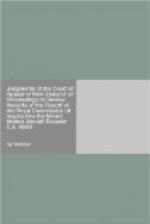The Disaster
In 1977 Air New Zealand began a series of non-scheduled sightseeing flights to the Antarctic with DC10 aircraft. The flights left and returned to New Zealand within the day and without touching down en route. The southernmost point of the route, at which the aircraft turned round, was to be at about the latitude of the two scientific bases, Scott Base (New Zealand) and McMurdo Station (United States), which lie about two miles apart, south of Ross Island. On Ross Island there are four volcanic mountains, the highest being Mount Erebus, about 12,450 feet. To the west of Ross Island is McMurdo Sound, about 40 miles long by 32 miles wide at the widest point and covered by ice for most of the year.
It was originally intended that the flight route south would be over Ross Island at a minimum of 16,000 feet. From October 1977, with the approval of the Civil Aviation Division, descent was permitted south of the Island to not lower than 6000 feet, subject to certain conditions concerning weather and other matters. However, the evidence is that the pilots were in practice left with a discretion to diverge from these route and height limitations in visual meteorological conditions; and they commonly did so, flying down McMurdo Sound and at times at levels lower than even 6000 feet. This had advantages both for sightseeing and also for radio and radar contact with McMurdo Station. Moreover from 1978 the flight plan, recording the various waypoints, stored in the Air New Zealand ground computer at Auckland actually showed the longitude of the southernmost waypoint as 164 deg. 48’ east, a point in the Sound approximately 25 miles to the west of McMurdo Station.
The evidence of the member of the airline’s navigation section who typed the figures into the computer was that he must have mistakenly typed 164 deg. 48’ instead of 166 deg. 48’ and failed to notice the error. Shortly before the fatal flight the navigation section became aware that there was some error, although their evidence was that they understood it to be only a matter of 10 minutes of longitude. In the ground computer the entry was altered to 166 deg. 58’ east, and this entry was among the many in the flight plan handed over to the crew for that flight for typing into the computerised device (AINS) on board the aircraft. The change was not expressly drawn to the attention of the crew. The AINS enables the pilot to fly automatically on the computer course (’nav’ track) at such times as he wishes.
The crash occurred at 12.50 pm on 28 November 1979. The aircraft struck the northern slopes of Mount Erebus, only about 1500 feet above sea level. There were no survivors. The evidence indicates that the weather was fine but overcast and that the plane had descended below the cloud base and was flying in clear air. The pilot, Captain Collins, had not been to the Antarctic before, and of the other four members of the flight crew only one, a flight engineer, had done so. The plane was on nav track.




